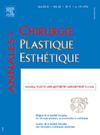我们的病人想要什么?患者在初次整形手术咨询期间的期望和要求]。
IF 0.5
4区 医学
Q4 SURGERY
引用次数: 0
摘要
背景:越来越多的媒体曝光整形、美容和重建手术,特别是通过社交网络,显著影响患者的期望。在初步咨询中了解这些期望对于改善患者护理和满意度至关重要。目的:了解患者首次会诊时的主要期望,并分析不同人口群体和会诊原因的差异。方法:对巴黎某大学附属医院整形外科首次会诊的104例患者进行调查。使用结构化问卷收集患者关键标准的数据,包括医生的态度、咨询时间、社会网络和科学出版物的影响。结果:最重要的标准是外科医生的共情态度(中位数:10/10)和准确的解释(中位数:10/10)。77.9%的受访者对远程咨询的接受度不高。62.5%的患者理想的首次咨询时间为15 - 30分钟。43%的患者认为社交网络很重要,主要是前后对比照片。55%的参与者重视科学出版物。出于审美原因进行咨询的患者(52%)比非审美原因(34%)更有可能认为社交网络出版物很重要。在患者中,40%是由医生推荐的,而21%是通过社交网络发现外科医生的。最后,在年轻患者和老年患者之间观察到明显的差异,特别是在他们对远程会诊的耐受性和他们发现医生的模式方面。结论:患者强调移情和详细沟通的必要性。整形外科医生可以利用这些发现来调整他们的实践,提高咨询经验。本文章由计算机程序翻译,如有差异,请以英文原文为准。
Que veulent nos patients ? Attentes et demandes des patients lors d’une première consultation en chirurgie plastique
Contexte
La médiatisation croissante de la chirurgie plastique, esthétique et reconstructrice, notamment sur les réseaux sociaux, influence significativement les attentes des patients. Comprendre ces attentes lors d’une première consultation est essentiel pour améliorer la prise en charge et la satisfaction des patients.
Objectif
Identifier les attentes principales des patients avant une première consultation et analyser les différences en fonction des groupes démographiques et des motifs de consultation.
Méthodologie
Une enquête a été menée auprès de 104 patients venus en consultation initiale au service de chirurgie plastique d’un hôpital universitaire. Un questionnaire structuré a permis de recueillir des données sur les critères importants pour les patients, incluant l’attitude du praticien, la durée de la consultation, et l’impact des réseaux sociaux et des publications scientifiques.
Résultats
Les critères les plus valorisés étaient l’attitude empathique du chirurgien (médiane : 10/10) et des explications précises (médiane : 10/10). La téléconsultation était mal acceptée par 77,9 % des répondants. La durée idéale d’une première consultation était de 15 à 30 min pour 62,5 % des patients. Les réseaux sociaux étaient jugés importants par 43 % des patients, principalement pour les photos avant/après. Les publications scientifiques étaient valorisées par 55 % des participants. Les patients consultant pour des motifs esthétiques étaient plus enclins à juger importantes les publications sur les réseaux (52 %) comparé à ceux ayant un motif non esthétique (34 %). Parmi les patients, 40 % ont été adressés par un médecin, tandis que 21 % ont découvert le chirurgien via les réseaux sociaux. Enfin, des différences claires ont été observées entre patients jeunes et âgés, notamment concernant leur tolérance à la téléconsultation et leur mode de découverte du praticien.
Conclusion
Les attentes des patients incluent une communication empathique et détaillée. Les chirurgiens plasticiens peuvent s’appuyer sur ces données pour adapter leur pratique et améliorer l’expérience des consultations.
Background
The growing media exposure of plastic, aesthetic, and reconstructive surgery, particularly through social networks, significantly influences patient expectations. Understanding these expectations during initial consultations is essential to improving patient care and satisfaction.
Objective
To identify the primary expectations of patients during a first consultation and analyze variations according to demographic groups and reasons for consultation.
Methods
A survey was conducted among 104 patients attending their first consultation at the plastic surgery department of a university hospital in Paris. A structured questionnaire was used to gather data on key criteria for patients, including the practitioner's attitude, consultation duration, and the influence of social networks and scientific publications.
Results
The most valued criteria were the surgeon's empathetic attitude (median: 10/10) and precise explanations (median: 10/10). Teleconsultation was poorly accepted by 77.9% of respondents. The ideal duration of a first consultation was 15 to 30 min for 62.5% of patients. Social networks were considered important by 43% of patients, mainly for before/after photos. Scientific publications were valued by 55% of participants. Patients consulting for aesthetic reasons were more likely to consider social networking publications important (52%) than those with non-aesthetic reasons (34%). Among patients, 40% were referred by a doctor, while 21% discovered the surgeon via social networks. Finally, clear differences were observed between younger and older patients, notably concerning their tolerance of teleconsultation and their mode of discovery of the practitioner.
Conclusion
Patients emphasize the need for empathetic and detailed communication. Plastic surgeons can leverage these findings to adapt their practice and enhance the consultation experience.
求助全文
通过发布文献求助,成功后即可免费获取论文全文。
去求助
来源期刊
CiteScore
1.00
自引率
0.00%
发文量
86
审稿时长
44 days
期刊介绍:
Qu''elle soit réparatrice après un traumatisme, pratiquée à la suite d''une malformation ou motivée par la gêne psychologique dans la vie du patient, la chirurgie plastique et esthétique touche toutes les parties du corps humain et concerne une large communauté de chirurgiens spécialisés.
Organe de la Société française de chirurgie plastique reconstructrice et esthétique, la revue publie 6 fois par an des éditoriaux, des mémoires originaux, des notes techniques, des faits cliniques, des actualités chirurgicales, des revues générales, des notes brèves, des lettres à la rédaction.
Sont également présentés des analyses d''articles et d''ouvrages, des comptes rendus de colloques, des informations professionnelles et un agenda des manifestations de la spécialité.

 求助内容:
求助内容: 应助结果提醒方式:
应助结果提醒方式:


